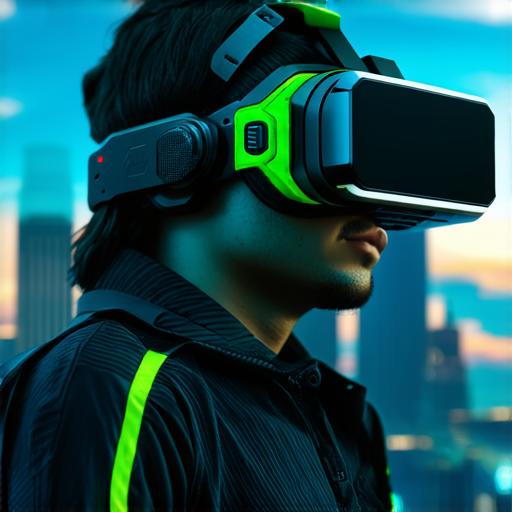
How does virtual reality provide assistance?
Virtual reality (VR) is quickly becoming an increasingly popular technology for education and training purposes. By providing immersive experiences that simulate real-world scenarios, VR can help learners to develop new skills, gain practical experience, and improve their overall performance.

In this article, we will explore some of the key ways that VR can assist in education and training, as well as provide examples of how it is currently being used in these contexts.
One of the main advantages of using VR for education and training is that it allows learners to experience situations that they might not otherwise be able to encounter in a safe and controlled environment. For example, medical students can use VR simulations to practice surgical procedures without risking the lives of real patients, while aviation trainees can simulate flight scenarios to develop their piloting skills.
Another benefit of using VR for education and training is that it can help learners to develop a better understanding of complex concepts by providing them with visual representations that are more easily comprehended than text or diagrams. For instance, VR can be used to teach engineering students about the inner workings of a machine or to show architects how their designs will look in a real-world setting.
Virtual reality can also assist in enhancing learners’ motivation and engagement levels. By providing an interactive and immersive experience, VR can help learners to stay focused and motivated throughout the learning process. This is particularly important for subjects that are difficult to engage with, such as math or science.
One example of how VR is being used in education is through the development of language learning programs. By simulating real-world scenarios, such as ordering food at a restaurant or asking for directions, learners can practice their language skills in a safe and controlled environment. This approach has been shown to be highly effective, with studies indicating that learners who use VR language learning programs make faster progress than those who use traditional methods.
Another example of how VR is being used in training is through the development of safety training programs for industries such as construction or manufacturing. By simulating dangerous scenarios, such as a falling object or a chemical spill, learners can develop their problem-solving skills and gain practical experience without putting themselves or others at risk.
In addition to these examples, VR is also being used in fields such as gaming and entertainment to provide immersive experiences that are highly engaging and motivating. For instance, VR games can be used to teach players about history or science while keeping them entertained and motivated to learn more.
Overall, the potential benefits of using VR for education and training are numerous. By providing immersive and interactive experiences that simulate real-world scenarios, VR can help learners to develop new skills, gain practical experience, and improve their overall performance. As VR technology continues to evolve, we can expect to see even more exciting applications in the field of education and training in the years to come.
FAQs:
Q: What are some examples of how virtual reality is currently being used in education and training?
A: Virtual reality is being used in a variety of contexts, including medical education, aviation training, language learning programs, safety training for industries such as construction or manufacturing, and gaming.
Q: How does virtual reality provide assistance in education and training?
A: Virtual reality provides immersive experiences that simulate real-world scenarios, allowing learners to experience situations that they might not otherwise be able to encounter in a safe and controlled environment. It also allows learners to develop a better understanding of complex concepts by providing visual representations that are more easily comprehended than text or diagrams. Additionally, virtual reality can enhance learners’ motivation and engagement levels.
Q: What are some potential benefits of using virtual reality for education and training?
A: The potential benefits of using virtual reality for education and training include immersive and interactive experiences that simulate real-world scenarios, allowing learners to develop new skills and gain practical experience without risking the lives of real patients or others. It also allows learners to develop a better understanding of complex concepts and enhance their motivation and engagement levels.


